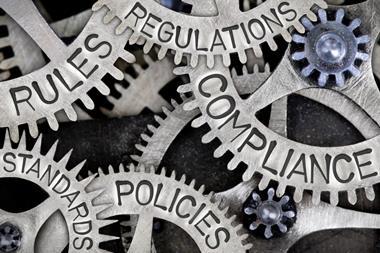A “harsh” insurance market means risk managers need to adapt fast to conditions most have never seen before
Average double-digit hikes in commercial insurance pricing and broader exclusions have turned the screw in what was already a “harsh” market, according to John Ludlow, CEO Airmic. “The hard market has accelerated into a very harsh market and it’s not just about price,” he says. “It’s also the exclusions going in because insurers can’t model the risks.”
Global average commercial insurance prices increased by 19% in the second quarter of 2020, according to the Global Insurance Market Index released by Marsh. This increase – the largest recorded since the Index was launched in 2012 – follows year-over-year average increases of 14% in the first quarter and 11% in the final quarter of 2019. The average recorded by Marsh was pushed up particularly by global property, which was up 19%, and global financial and professional lines, which were up 37%.
Earlier this year, the 2020 FERMA European Risk Manager Report found there was almost universal concern by risk and insurance managers about these conditions: 90% saw limitations and exclusions of specific emerging risks, and 88% highlighted the change in market conditions.
Tackling underperformance
While conditions have undoubtedly worsened sharply in 2020, the hardening trend began several years ago, and for some the turning point was the Lloyd’s Decile 10 review. Most insurers rely on some sort of Lloyd’s platform to operate and the Decile 10 review, initiated by the market’s then director of performance Jon Hancock, shone a light on underperforming areas of business.
“What this told the market was that there were genuine difficulties in terms of underwriting results in certain lines of business, such as international property, marine, professional and financial lines – D&Os and PI in particular,” says Alexander Chester, Global Placement Leader, Marsh UK & Ireland.
This toughened the position of insurers who were already under pressure to make changes to their underwriting approach. “As we moved into 2020, Covid-19 further strengthened the resolve of insurers to continue with this toughened stance and focus on their portfolio underwriting strategies,” says Chester.
For risk managers, the COVID impact has meant that the hike in price has also been accompanied by a tightening up of the small print as insurers, re/insurers and Lloyd’s syndicates looked to secure more stringent terms and conditions in accordance with their pricing models. “We are seeing insurers reacting with multiple levels of sign off, particularly on complex risks,” says Chester. “All of this means a lengthening of the timeline required to secure the renewal capacity our clients need.”
Capacity is also in retreat on some lines. For example, there is a now a near absence of cover for non-damage business interruption, which is critical to resilience in case of systemic risks such as pandemic or widespread cyber attacks. All of which leaves some risk managers complaining that insurers are making a tough situation tougher.
“I think [insurers] really do have to face the charge that they are not giving enough notice of changes in lines they’re covering, whether that’s in terms of the coverages they’re giving, the exclusions, their pricing,” says Ludlow. “We started saying to people earlier in the year that they needed to start their renewal earlier. Well we do, but you’re still not going to get an answer until one minute past midnight. So it’s not very customer friendly.
“[Buying insurance] feels very transactional and frankly, I think insurers need to sort it out,” he adds. “They need to learn how to model risks, how to differentiate between risks and how to price things properly because the way they’re going customers are finding other ways than insurance to spend their money.”
Others point out that that tough market conditions have also been compounded by a lack of preparation by risk and insurance managers, who have had it too good for too long. Insurance buyers may have been lulled into a false sense of security by a prolonged soft market. “I’m part of the older generation now, and most of my colleagues have never seen a hard market,” says GVNW president Alexander Mahnke. “They don’t know how to deal with it, how to prepare and how to negotiate.”
Navigating the hard market
But all risk managers need to act now and find ways to help their employers. For some, the increased amount of risk data now available may present an opportunity to improve the accuracy and efficiency of risk analysis and use that for leverage when purchasing insurance.
“Data analysis and visualisation and even artificial intelligence is producing information that can interact with insurance products for more accurate coverage,” says Dirk Wegener, president of FERMA. “Risk managers are doing more than ever before to collect and analyse data, and they need to build further skills.”
But in the end better working practices can only take you so far if insurers have cut their capacity or pushed prices beyond what’s affordable, which may mean turning to new markets that might not understand your business, and here the role of the broker becomes vital.
“What makes a good broker is someone who can be more technical and more knowledgeable than the insurers even, so they can adapt according to the conditions,” says Mahnke.
In a hard market that means following a placement strategy that creates competition in the market on behalf of clients, setting a strategy that has an A plan a B plan, anticipating challenges and talking to the client about developing a response in advance, according to Marsh’s Chester.
“It’s also very important to manage the timeline effectively and make sure that the flow of information to the underwriters happens when it should, particularly in the environment we are in at the moment where face-to-face meetings aren’t always possible,” he says.
“The most important work we do takes place before we go to the market and we are spending more time with clients than ever before discussing high quality underwriting submissions and marketing plans, what engagement with insurers is required and how we intend to go about this. We are reviewing their plans and looking at what they can give up and what they need to keep.”
And finally as risk becomes an increasingly key consideration as corporate strategy adapts to a rapidly changing – and increasingly risky – world, risk managers must help their CEOs and CFOs to understand the strategic role that insurance can play in meeting corporate objectives and see it as part of a business’s strategic decision making, not just a transaction to provide insurance.
“The big advantage risk managers have is that they operate at the interface of all the risks the company faces, and they should use that,” advises Mahnke.




















No comments yet